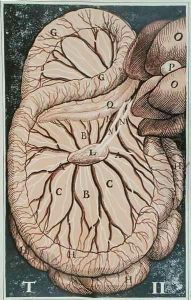Gasparo Aselli Paintings
Gasparo Aselli, born in 1581 in Cremona, Italy, was a pioneering figure in the medical and scientific community of the Renaissance. Not traditionally recognized as an artist in the conventional sense, Aselli's contributions to the field of anatomy and his innovative approach to the visualization of the human body's internal systems nonetheless position him at the intersection of art and science, a common crossroads in the Renaissance period. His work is particularly notable for the discovery and detailed study of the lymphatic system, marking a significant advancement in medical knowledge and understanding of human physiology.
After pursuing his education in Pavia, Aselli embarked on a career as a physician and anatomist, delving into intricate dissections that would lead to his groundbreaking findings. His most significant contribution to the medical sciences was his detailed observation and documentation of the chyliferous vessels, which are part of the lymphatic system. In 1622, he published 'De lactibus sive lacteis venis', a comprehensive treatise that illustrated these vessels for the first time, effectively revolutionizing the understanding of the digestive and circulatory systems. The illustrations in his book, based on dissections he performed on dogs, revealed the then-unknown network of vessels that transport chyle, a milky bodily fluid, from the intestines to the bloodstream.
Aselli's work is emblematic of the era's blend of art and science, as his detailed drawings and diagrams provided not only a scientific record but also a visual exploration of the human body that carried an intrinsic aesthetic value. Though his life was cut short when he died in 1626, his contributions laid foundational knowledge for future anatomical studies and the eventual detailed mapping of the lymphatic system. Aselli's legacy is that of a pioneer who, through his meticulous work and innovative methods of presentation, bridged the gap between scientific inquiry and artistic representation, embodying the Renaissance spirit of exploration and discovery in both fields.
